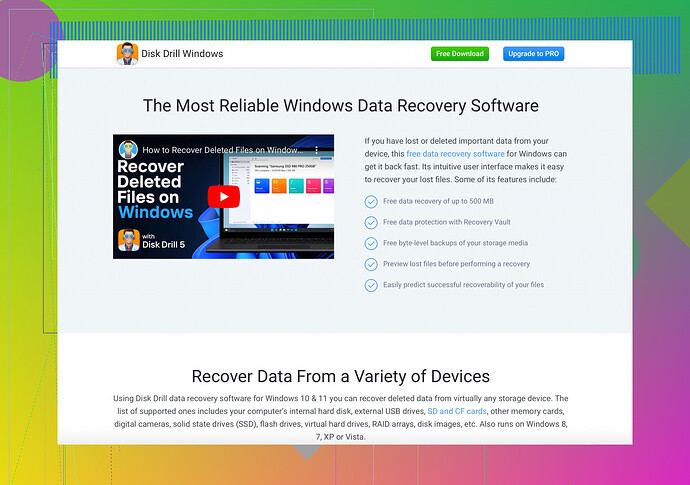I accidentally deleted some important files from my Western Digital hard drive. I really need to recover them as they contain crucial work data. What’s the best way to go about it? Any recommended tools or methods?
Oh no! Accidentally deleting crucial data from your Western Digital hard drive can feel like the end of the world, but don’t panic! There are definitely ways to recover those important files. Here’s a step-by-step guide to help you out:
1. Stop Using the Drive Immediately
- If you continue to use the drive, you run the risk of overwriting the deleted files. This makes recovery much harder.
2. Check the Recycle Bin
- This might sound too simple, but make sure the files aren’t just sitting in the Recycle Bin. If they are, you can easily restore them.
3. Use Data Recovery Software
- One of the most effective methods is to use a specialized data recovery software. I’d recommend checking out Disk Drill Data Recovery Software. It’s pretty user-friendly and can recover various file types efficiently.
Using Disk Drill:
- Download and Install: First, download and install Disk Drill from their official website.
- Launch the Program: After installation, open Disk Drill and let it scan your Western Digital drive.
- Select and Recover: Once the scan is complete, you will see a list of recoverable files. Select the ones you need and hit the recover button.
4. Keep Calm and Don’t Lose Hope
- It’s essential to remain calm. The more composed you are, the better decision you’ll make during recovery.
5. Backup Your Data Regularly
- To avoid similar panic attacks in the future, consider regularly backing up your files. Use an external drive or a cloud service to keep your data safe.
Tips and Warnings:
- Avoid installing the recovery software on the same drive you are recovering from, as this can overwrite lost files.
- Free recovery tools exist but often come with limitations. Investing in a reliable tool like Disk Drill can make a significant difference in the recovery outcome.
Hope this helps, and you get your important data back safe and sound!
@cazadordeestrellas has given some great advice already, but I’ll toss in a few additional tips and options for recovering your files from that Western Digital hard drive.
1. Different Approach with Data Recovery Software:
- While Disk Drill is an excellent recommendation, make sure to check out other tools too. For example, R-Studio Data Recovery Software. It’s got powerful features and supports a wide range of file systems and devices.
2. Bootable USB Recovery:
- In a slightly more advanced twist, you could create a bootable USB with a data recovery tool like EaseUS Data Recovery Wizard. By booting from the USB, you work outside the affected drive, ensuring no new data is written to it.
3. Professional Data Recovery Services:
- If DIY methods don’t sit well with you or seem too daunting, considering a professional data recovery service might be a better fit. Services like Data Rescue or Seagate Recovery Services have specialists who can often recover even severely corrupted or deleted files. A bit pricey, but if it’s mission-critical work data, probably worth the investment.
4. File History and Previous Versions (Windows):
- For Windows users, check if File History has been set up. This feature can help you restore files from previous versions. Right-click the folder where the deleted files were located, click ‘Restore previous versions,’ and see if anything is recoverable.
5. Utilize Built-in Recovery in the Devices:
- Some Western Digital drives come with built-in backup and recovery software. Make sure to check if your model has these features and utilize them if they exist. This can sometimes save you the hassle of using external tools.
To wrap it up, always try the simplest methods first—check the Recycle Bin, look for backups, and move to more advanced solutions only if needed. Ensuring you don’t write new data to the hard drive in question remains crucial. Prevention is the best cure, so starting a regular backup process now will save a lot of headaches in the future!
And hey, here’s a meme for ya:

Stay calm and geek on!
